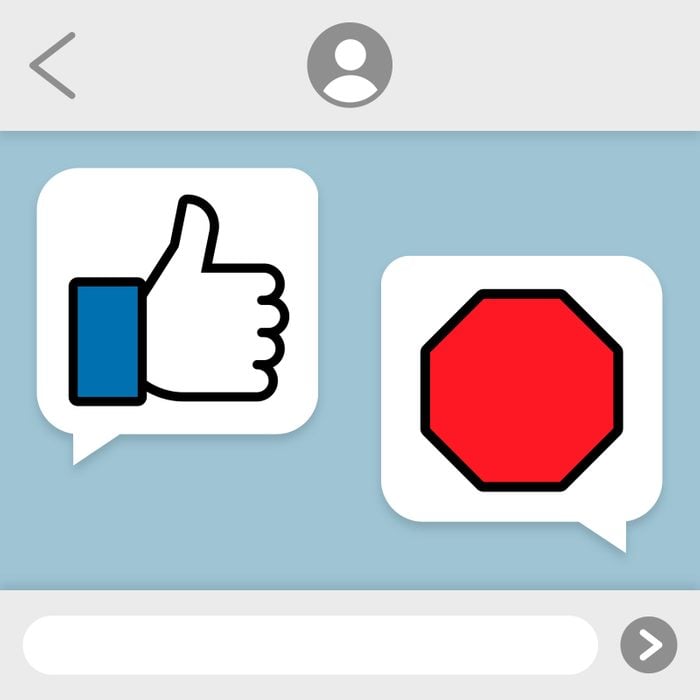Should You Use the Thumbs Up Emoji? Your Gen Z Co-Workers Want You to Stop
Updated: Aug. 03, 2023

Many younger office workers see it as passive-aggressive, along with several other emojis used by "old people."
If you’ve worked at an office, if you’ve used Teams or Slack or WhatsApp, or if you’re just someone who’s ever sent a text message, you’ve likely replied to a text with the thumbs-up emoji—at least if you’re of a certain age. But you should know that your younger co-workers, relatives, and friends don’t really like it.
In fact, many of them may find it passive-aggressive or even a bit confrontational. A few may even feel “attacked.” At least that’s the finding in a recent poll of 2,000 workers aged 16-29, reported by the Daily Mail, who overwhelmingly say the thumbs up (and nine other emojis) are only used by “old people.”
“’No one my age in the office does it, but the Gen X people always do it,” said one Gen Z worker quoted in the poll. “Took me a bit to adjust and get [it] out of my head that it means they’re mad at me.” Said another woman polled, “My last workplace had a WhatsApp chat for our team to send info to each other on and most of the people on there just replied with a thumbs up. I don’t know why but it seemed a little bit hostile to me.”
Is the thumbs-up emoji really “passive-aggressive”?
A flurry of heated debate about the merits of a thumbs-up emoji has sprung up on the internet over the past couple of days. Plenty of Gen Xers and Millennials have dismissed the notion, insisting their younger colleagues are just being too fragile or too sensitive. Yes, perhaps it’s too extreme to suggest never using the thumbs-up emoji. But it’s never a wise idea to completely dismiss the collective feelings of an entire cohort of people.
What other emojis are problematic?
Other emojis disliked by Gen Z are the red heart emoji, the OK hand, the monkey covering eyes, clapping hands, the grimacing face, and the infamous poop emoji. Perhaps it’s simply generational and we’re seeing the real meaning behind emojis evolve over the course of the emoji’s history.
What will replace the thumbs-up emoji in communications?
Now that you know an entire generation of people doesn’t love this emoji, what’s the solution? In our office, to be honest, we’ve become a little self-conscious about using the thumbs-up option. In fact, it’s now become a running joke between my boss and me—though neither of us is Gen Z.
If the thumbs-up is truly cancelled, what will take its place? We’re stumped by this emoji riddle. Perhaps the new panic emoji was created for just such a problem.
Source: Daily Mail